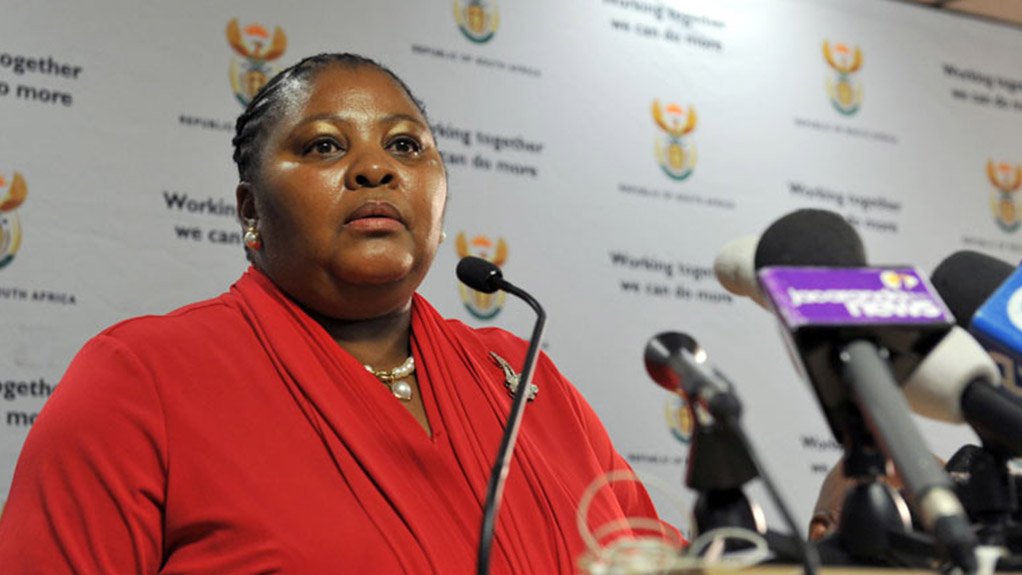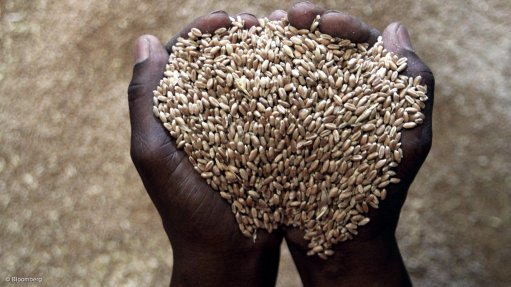Minister seeks to integrate defence sector with national development, rebuild SANDF
In her budget speech to Parliament in Cape Town on Wednesday, Defence and Military Veterans Minister Nosiviwe Mapisa-Nqakula has reported progress in the institutionalisation of the relationship between the Department of Defence (DoD) and the local defence industry. “Our plans for the establishment of the National Defence Industry Council are at an advanced stage,” she said. “The launching of the Council will usher [in] a new dispensation for the management of our relations with the defence industry and also allow for direct support in this regard.”
The National Defence Industry Council is intended to provide close coordination between the country’s defence companies, research agencies and the South African National Defence Force (SANDF). It was formally launched in March 2012.
“The hosting of this year’s edition of the African Aerospace and Defence show in September will also give South African industry another opportunity for marketing and expansion,” she pointed out. “The show will represent a key highlight of our calendar as we celebrate 20 years of the existence of the SANDF.”
She informed the National Assembly that the DoD was examining a 20-year Defence Development Programme that would be split up into four medium-term strategic framework (MTSF) periods, each of five years. The first of these was starting in this financial year (2014/2015) and running until the 2018/2019 financial year.
During this first MTSF, the DoD will integrate its “Strategic Intent” with the government’s planning cycle and ensure that it supports the National Development Plan, the New Growth Path and the Industrial Policy Action Plan (Ipap), as well as incorporating the commitments and missions for the DoD and SANDF emanating from the new National Security Strategy. “The introduction of this long-term planning brings greater coherence and continuity to our planning system and [contributes] towards the achievement of the vision and goals of the country,” she affirmed.
The Minister made repeated references to the Defence Review, which has now been tabled for consideration by Parliament. “We do hope,” she stated, “that, given its centrality to our planning, Parliament will treat the finalisation of the review as a matter of critical urgency.”
“The question crucially posed by the review is: what is it that we want the defence force to do at home, in the region and the rest of the continent[?]” she queried. “Once that question is definitely answered, adequate resources must be allocated to enable the DoD to execute its mandate with the requisite effectiveness and efficiency.”
Mapisa-Nqakula noted that the Defence Review reported that the SANDF was in decline. It suffered from having main operating systems it cannot afford to operate, obsolescent technologies and imbalances between its capabilities. The Review proposed a 25-year plan, divided into five-year “milestones”, to turn the SANDF around and transform it into a force capable, if required, of waging a limited war.
The first of these milestones is intended to halt the current decline. To achieve this, the DoD will devote its attention to six strategic areas during the current MTSF period. One of these areas involves the development of the Defence Industry Strategy, the “Technology Agenda”, innovation plans and the incorporation of the defence industry into Ipap. Another requires the overhaul of the defence capability strategy and of direct defence acquisition, to bring them in line with the review’s remaining milestones.
The other four strategic areas are concerned with funding, personnel, renewing the defence organisation and providing for strategic leadership (including succession planning) for the next 20 years. “It is important that the Defence Review should not be premised solely on the need for more money for the SANDF,” she warned. “While this is important, the DoD has a responsibility in preparing its ground for implementation, to ensure that it improves its processes to work smarter, eliminate wastage, improve accountability and redeploy current resources.”
Comments
Press Office
Announcements
What's On
Subscribe to improve your user experience...
Option 1 (equivalent of R125 a month):
Receive a weekly copy of Creamer Media's Engineering News & Mining Weekly magazine
(print copy for those in South Africa and e-magazine for those outside of South Africa)
Receive daily email newsletters
Access to full search results
Access archive of magazine back copies
Access to Projects in Progress
Access to ONE Research Report of your choice in PDF format
Option 2 (equivalent of R375 a month):
All benefits from Option 1
PLUS
Access to Creamer Media's Research Channel Africa for ALL Research Reports, in PDF format, on various industrial and mining sectors
including Electricity; Water; Energy Transition; Hydrogen; Roads, Rail and Ports; Coal; Gold; Platinum; Battery Metals; etc.
Already a subscriber?
Forgotten your password?
Receive weekly copy of Creamer Media's Engineering News & Mining Weekly magazine (print copy for those in South Africa and e-magazine for those outside of South Africa)
➕
Recieve daily email newsletters
➕
Access to full search results
➕
Access archive of magazine back copies
➕
Access to Projects in Progress
➕
Access to ONE Research Report of your choice in PDF format
RESEARCH CHANNEL AFRICA
R4500 (equivalent of R375 a month)
SUBSCRIBEAll benefits from Option 1
➕
Access to Creamer Media's Research Channel Africa for ALL Research Reports on various industrial and mining sectors, in PDF format, including on:
Electricity
➕
Water
➕
Energy Transition
➕
Hydrogen
➕
Roads, Rail and Ports
➕
Coal
➕
Gold
➕
Platinum
➕
Battery Metals
➕
etc.
Receive all benefits from Option 1 or Option 2 delivered to numerous people at your company
➕
Multiple User names and Passwords for simultaneous log-ins
➕
Intranet integration access to all in your organisation





















